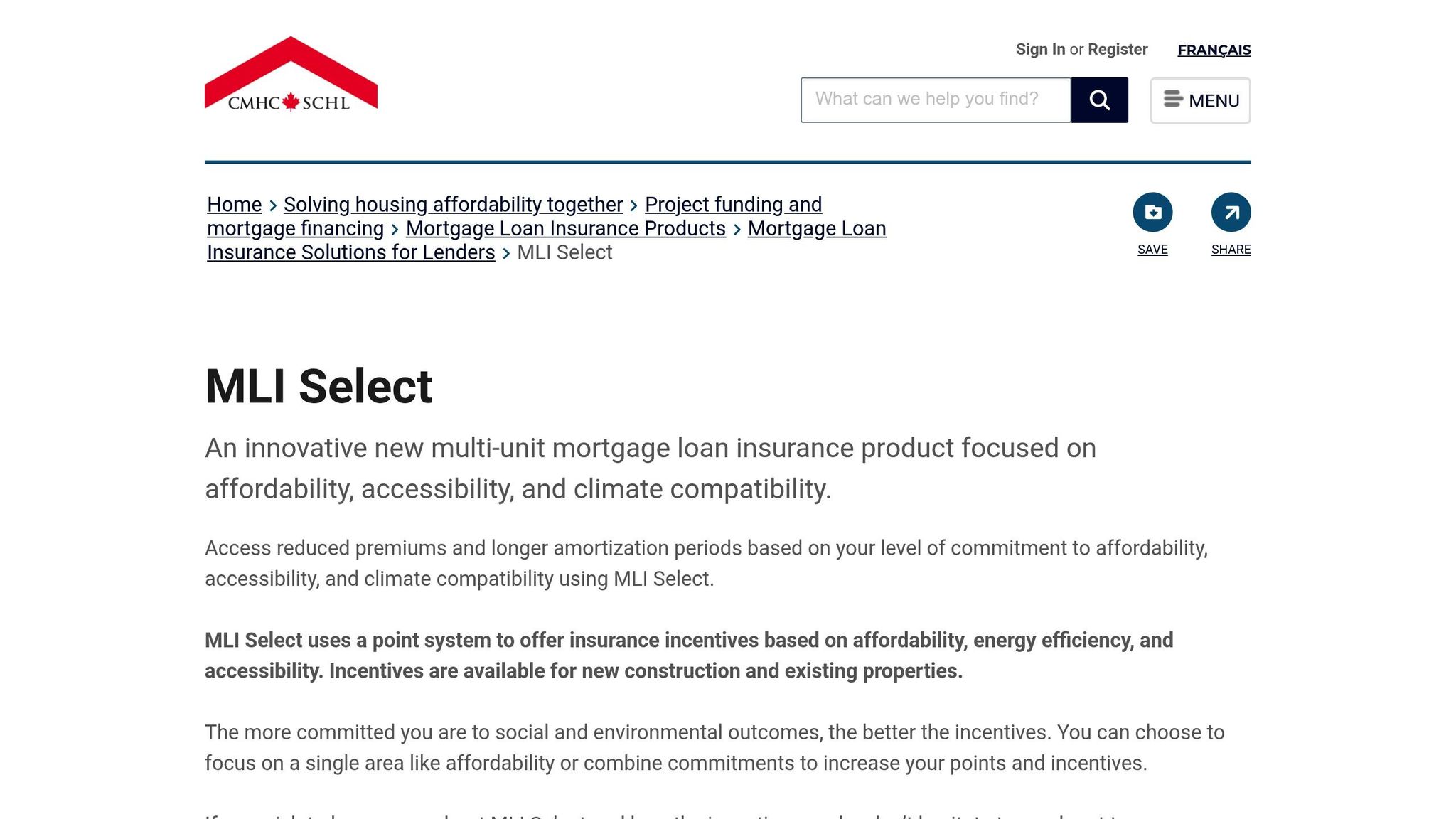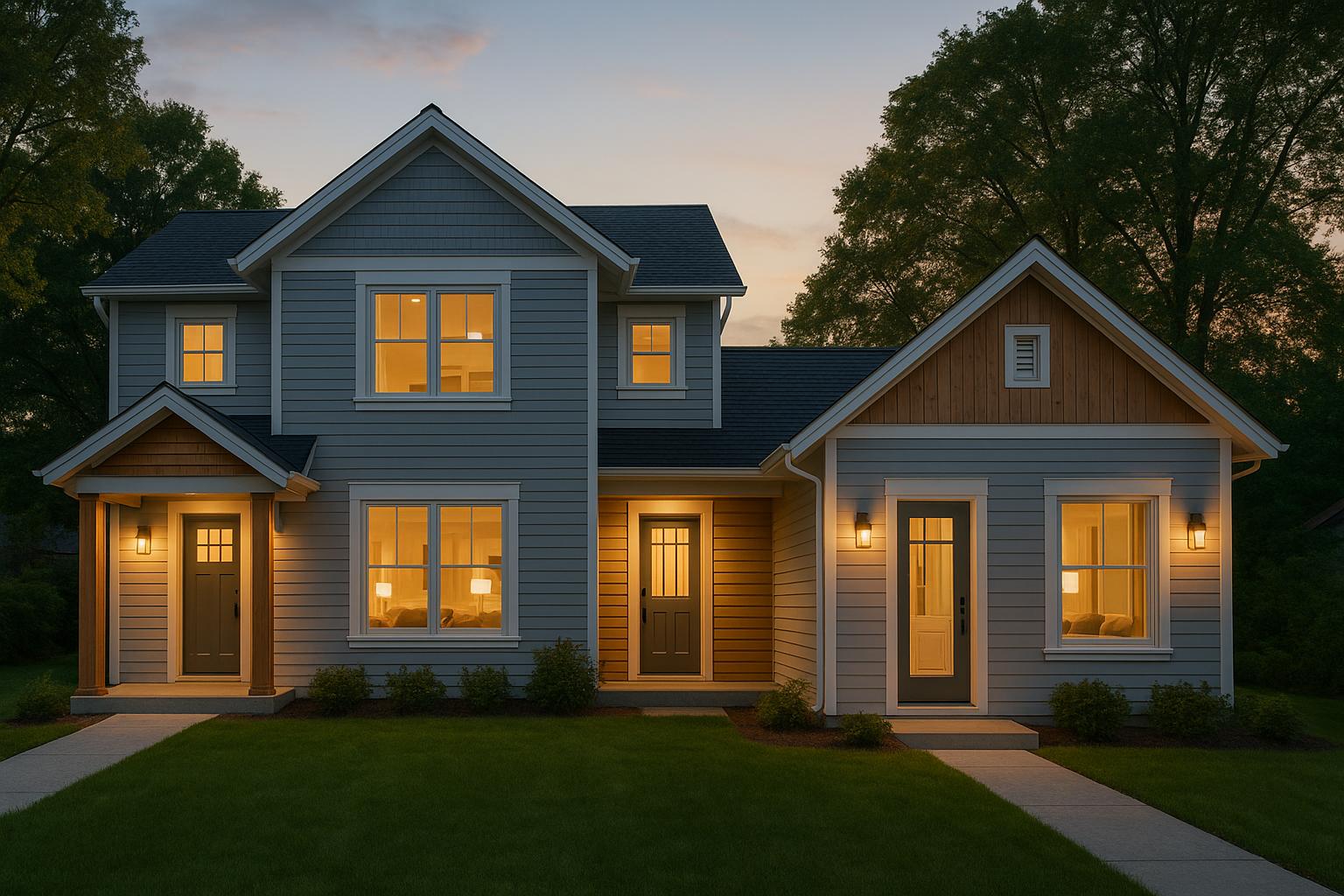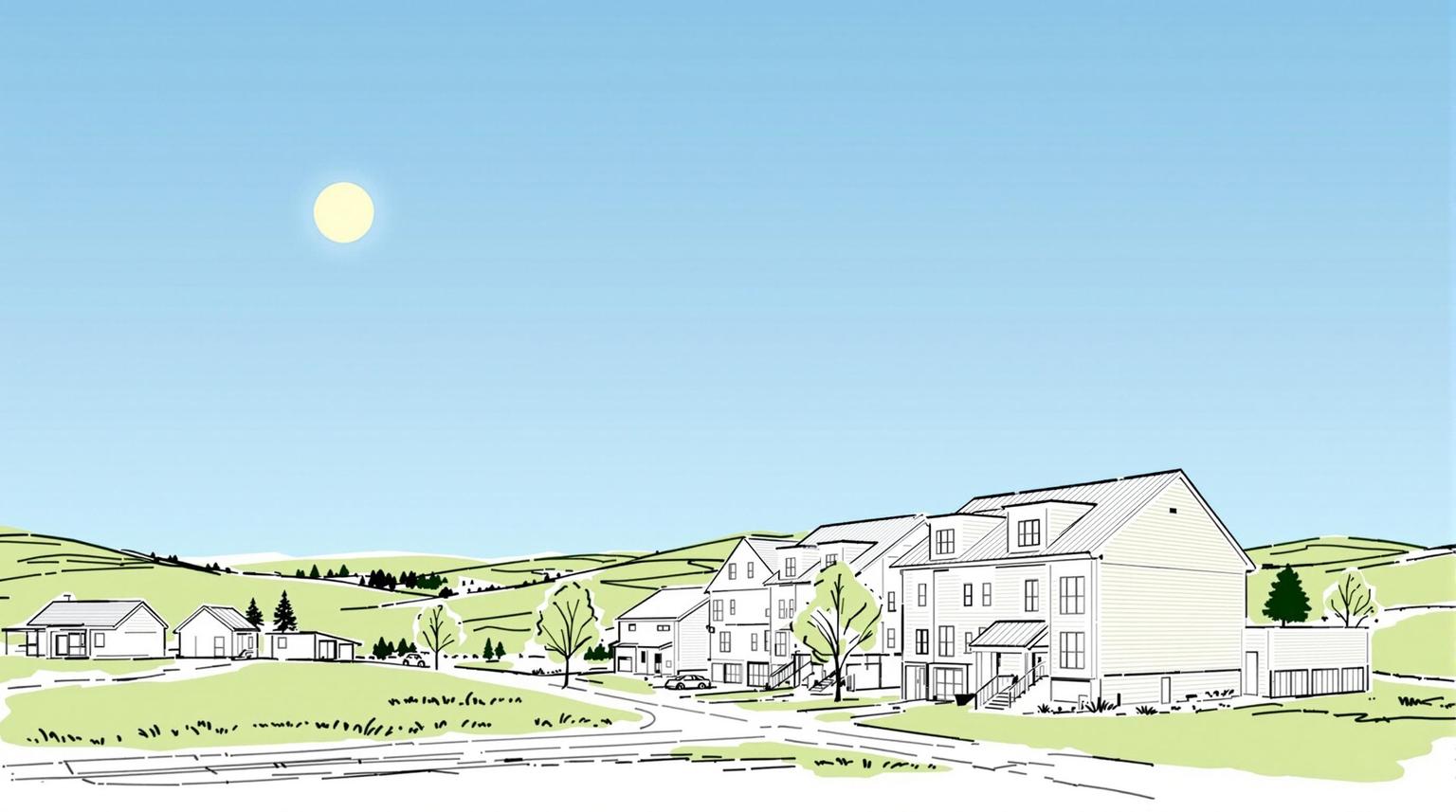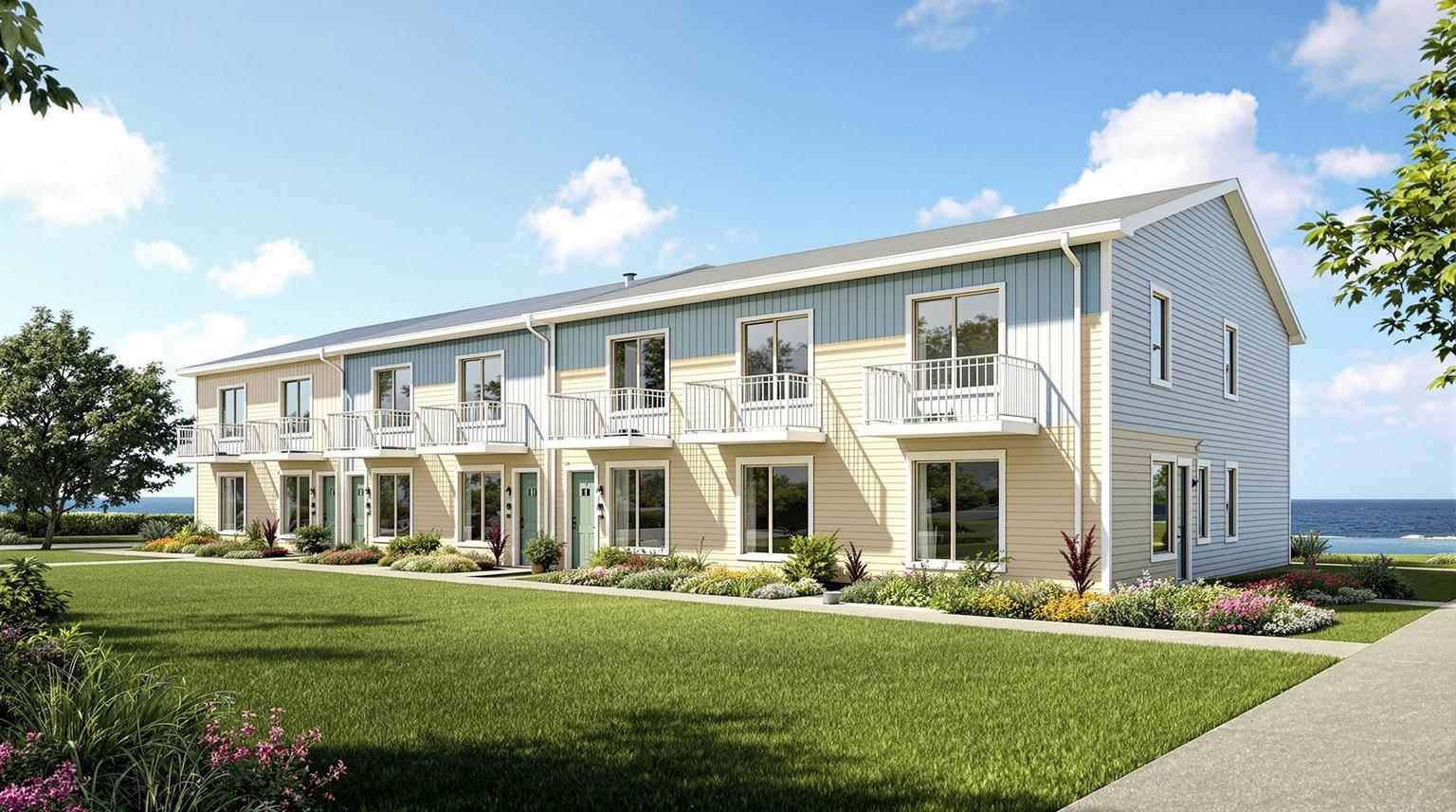The design-build approach simplifies constructing rental properties in Halifax by combining design, permitting, and construction into a single, unified process. Instead of managing multiple professionals - architects, engineers, contractors - property owners work with one team, ensuring predictable costs, faster timelines, and streamlined communication.
Key benefits include:
- Fixed pricing: $160,000/unit for standard builds, eliminating cost overruns.
- Guaranteed timelines: 6-month completion with penalties for delays.
- Single accountability: One point of contact manages the entire project.
- Higher ROI: Projects achieve 12%-20% annual returns with rental income of $1,950–$2,100/unit per month.
Halifax's competitive rental market, combined with zoning reforms and the CMHC MLI Select program, makes this method ideal for property owners looking for efficiency and financial certainty.
New Construction in Halifax Part One. How Much Does It Cost? How to Select a Builder?
The Design-Build Process for Multi-Unit Rentals in Halifax
To understand why the design-build approach often outperforms traditional construction methods, it’s helpful to break down its process. This method unfolds in three key phases, each carefully structured to avoid the common issues that can disrupt apartment construction projects.
Project Assessment and Feasibility Review
Unlike traditional approaches, where design and construction are handled separately, the design-build model takes a holistic view of the project from the start, addressing potential problems early on.
The process begins with a detailed site evaluation. The team examines the construction site thoroughly, assessing existing structures and electrical systems to ensure efficiency [1].
Navigating Halifax's regulatory environment is also critical. The city’s Interactive Property Information Map provides essential details about development restrictions on your lot [3]. A design-build team reviews these constraints alongside Halifax’s Land Use By-laws to confirm that your project aligns with local zoning requirements.
At the same time, a comprehensive business plan is developed. This includes analyzing feasibility, projected value, pro forma financials, and conducting in-depth budget and schedule reviews [4]. For instance, Helio Urban Development offers financial projections showing potential rental income of $1,950–2,100 per unit per month, with annual returns ranging from 12% to 20%.
The key advantage lies in having a single, unified team. Instead of hiring separate consultants for individual assessments, the design-build team handles everything, eliminating the coordination headaches that come with independent architects, engineers, and contractors. Once the groundwork is laid, the team moves seamlessly into managing regulatory approvals.
Permits and Regulatory Approvals
The permitting process in Halifax can be challenging, but design-build teams streamline this step by managing all regulatory requirements on behalf of property owners. This spares owners from dealing with municipal bureaucracy or juggling multiple professionals.
For multi-unit residential buildings with more than four units, more than three storeys, or a footprint exceeding 600 square metres, Commercial Building Permits are mandatory [3]. The design-build team prepares and submits all required Professional Design Documents, which must be signed by Qualified Professionals [3].
They also handle every aspect of permit applications and inspections to avoid delays. Tasks include setting up customer portal accounts, creating contractor profiles, collecting necessary information, and submitting applications online. All of this is coordinated to match construction schedules [3]. Municipal staff establish inspection milestones and require an A11 document before issuing a Certificate of Occupancy [3].
In Halifax, building permits expire two years after issuance, and fees based on the construction value must be paid when applying [3]. A design-build team ensures permits are timed correctly to avoid costly reapplications.
This consolidated approach prevents delays caused by conflicting information or missed requirements, which are common when multiple professionals are involved.
Construction and Project Completion
Once feasibility is confirmed and permits are secured, the design-build team moves directly into construction. Because the same team manages design, permitting, and construction, the project begins with complete clarity - minimizing the surprises that often disrupt traditional builds.
By overlapping phases, such as starting site preparation while final details are being finalized, the design-build process accelerates timelines. Continuous quality checks and a single point of contact ensure smooth progress and quick resolution of any issues [1] [2]. Property owners receive updates from one source, avoiding the confusion and blame-shifting that can happen when coordinating multiple contractors.
For example, Helio Urban Development provides daily photo updates through a real-time project portal, allowing property owners to monitor progress remotely.
Project completion includes a thorough handover process. This phase involves providing detailed resources such as instructional videos, documented procedures, and in-person training for relevant staff [1]. This ensures property owners have everything they need to manage their rental property effectively.
The design-build approach also delivers results you can count on. For instance, Helio guarantees six-month construction timelines and offers financial penalties of up to $1,000 per day for delays. This ensures predictability, allowing property owners to plan for tenant move-ins and start generating rental income on time.
Design-Build vs Traditional Construction Methods
Halifax property owners often face a critical decision: stick with the fragmented traditional construction approach or opt for the streamlined design-build method. This choice can significantly impact the success of a project, both in terms of cost and timeline.
Main Differences Between Construction Methods
The differences between traditional construction and design-build are stark, as shown below:
| Aspect | Traditional Fragmented Construction | Design-Build Method |
|---|---|---|
| Cost Certainty | Cost-plus pricing often leads to overruns ranging from 30% to 60% | Fixed-price contracts established before construction begins |
| Timeline Predictability | Projects frequently extend from an 8‑month plan to 18+ months due to delays | Guaranteed 6‑month completion with penalties for delays |
| Communication | Requires coordinating six or more separate professionals | A single point of contact oversees the entire project |
| Accountability | Multiple contractors often shift blame when issues arise | One team is responsible for every aspect of the project |
| Project Management | Owners manage multiple contracts and schedules | The integrated team handles all coordination |
| Quality Control | Standards vary across contractors | Unified quality standards enforced through triple verification |
Traditional construction requires property owners to act as project managers, juggling contracts with architects, engineers, and permit specialists. Each professional works independently, which often leads to conflicting priorities and timelines that owners must reconcile on their own.
On the other hand, design-build removes this burden entirely. Companies like Helio Urban Development integrate planners, architects, engineers, and construction crews under one roof. This streamlined approach not only eliminates inefficiency but also saves property owners an average of $47,000 per project.
These contrasts highlight why design-build is better equipped to navigate common construction challenges.
How Design-Build Prevents Common Construction Problems
As outlined earlier, the design-build model simplifies construction by eliminating multiple contracts and ensuring a single point of accountability.
One of the biggest advantages of the design-build approach is cost certainty. While traditional construction often relies on cost-plus contracts - where owners pay for materials, labour, and additional markups - design-build teams secure fixed-price contracts before construction begins. For instance, Helio Urban Development has consistently delivered projects with no cost overruns, locking in rates at $160,000 per unit for standard builds.
Timelines are another critical factor. Traditional projects, initially estimated at 8 months, can end up stretching over 18 months due to coordination issues. Design-build teams, however, use advanced scheduling systems to complete projects within 6 months. To ensure accountability, they include financial penalties of up to $1,000 per day for delays. This efficiency allows property owners to start collecting monthly rental income - typically between $1,950 and $2,100 - on time.
Daily transparency further enhances communication. Instead of chasing updates from multiple contractors, property owners receive daily photo updates through real-time project portals. This system offers complete visibility without the hassle of managing multiple teams.
Quality control is another area where design-build excels. Traditional construction often results in inconsistent quality due to the involvement of various contractors. In contrast, design-build teams enforce uniform quality standards through a triple-verification process. This includes inspections by multiple Professional Engineers, oversight by the property owner, and a 2‑year warranty for added peace of mind.
Finally, having a single, integrated team eliminates the blame game. When issues arise, they are addressed quickly and efficiently by the same team, ensuring smoother project execution.
In Halifax’s competitive rental market, these advantages are invaluable. Construction delays can mean missing peak rental seasons, leading to lost income. By choosing design-build, property owners gain the predictability and control needed to achieve annual returns of 12% to 20% - all without the stress and uncertainty associated with traditional construction methods.
sbb-itb-16b8a48
Guarantees and Services from Halifax Design-Build Teams
Halifax's design-build firms recognize that property owners crave certainty when it comes to construction projects. Unlike traditional contractors, who often lack fixed guarantees, design-build teams offer clear assurances that safeguard both investments and potential rental income. This builds on the single-contract model mentioned earlier, providing a streamlined process with added security.
Fixed-Price Contracts and Timeline Guarantees
One of the biggest perks of working with a trusted design-build team is knowing the costs upfront. Traditional construction often uses cost-plus contracts, which can lead to unexpected expenses. In contrast, design-build companies lock in pricing before construction even begins.
Take Helio, for example. They guarantee fixed prices - $160,000 per unit for standard builds and $200,000 per unit for CMHC MLI Select projects. On top of that, they offer a 6-month completion guarantee, backed by a penalty of $1,000 per day for delays. This ensures projects stay on track and rental income starts flowing as planned. Impressively, Helio has reported $0 in cost overruns across its completed projects.
Missing peak rental seasons can be a costly mistake, with property owners losing thousands in potential income. With these guarantees, owners can count on collecting monthly rental income of $1,950 to $2,100 per unit right on schedule.
"I personally guarantee every timeline because I've felt the pain of construction delays", says Lloyd Liu, Co-Founder and CEO of Helio Urban Development.
This level of accountability is rare in traditional construction, where delays and cost overruns are common. These financial protections naturally tie into a process that prioritizes communication and quality, as outlined below.
Project Transparency and Quality Control
In addition to fixed prices and deadlines, design-build teams excel in keeping property owners informed. Instead of leaving owners in the dark, these companies use technology to provide daily photo updates through real-time project portals. This allows owners to track progress from anywhere.
When it comes to quality, design-build construction follows a rigorous system of checks. For instance, Helio employs a triple-verification process: Professional Engineers conduct five inspections during construction, property owners can select their own final inspector, and all work is covered by a 2-year warranty. This ensures construction meets both building codes and the durability standards required for rental properties.
Another advantage of the design-build model is the seamless collaboration between architects, engineers, and construction crews. By working together under one company, these professionals maintain consistent quality standards, avoiding the miscommunication and competing priorities that often plague traditional methods.
Regional expertise is also a key benefit for Halifax-area property owners. Established design-build firms offer services across multiple municipalities, combining local knowledge with efficient project management. Helio, for instance, operates within a 90-minute radius of Halifax, managing 31 units currently under construction and planning for 131 more.
Financial Benefits of Design-Build for Halifax Property Owners
Choosing a design-build approach can provide Halifax property owners with predictable costs, strong returns, and lower financial risks. These guarantees in both cost and timeline often lead to better financial outcomes.
Construction Costs and Rental Returns
With design-build, property owners can expect steady rental income and impressive returns on investment (ROI). Helio's fixed pricing model offers construction at $160,000 per unit, including premium features like triple-pane windows, quartz countertops, and engineered hardwood flooring. These aren't your average rentals - they're designed to appeal to tenants willing to pay top-tier rents.
The numbers speak for themselves. Each unit generates $23,400–$25,200 annually, meaning a fourplex can bring in $93,600–$100,800 per year. With fixed construction costs, property owners can typically achieve a 12% to 20% annual ROI on their rental properties.
Cost overruns are a major concern in traditional construction, often reaching 30%–60%. Helio's $0 overrun record can save a fourplex owner up to $384,000. And with a 6‑month completion guarantee, property owners avoid delays that could miss peak rental seasons. For example, a three-month delay on a fourplex generating $8,800 per month could result in a loss of $26,400.
CMHC MLI Select Program Benefits

Beyond operational savings, financing options through the CMHC MLI Select program can significantly enhance the financial advantages of design-build projects. While MLI Select raises construction costs to $200,000 per unit, it allows for 95% financing with just 5% down, compared to the usual 20%–25%.
This creates a 20:1 leverage ratio, far exceeding the standard 5:1 ratio, enabling property owners to build more units with the same capital. A 50‑year amortization further reduces monthly payments, often resulting in immediate positive cash flow.
For a fourplex, the difference is striking. Standard construction with 25% down would require $160,000 in equity, whereas MLI Select construction needs only $40,000 down, even with the higher per-unit cost. This frees up $120,000 in capital, which can be reinvested in additional projects or other ventures.
MLI Select also requires properties to be 40% more efficient than building code, which lowers ongoing utility costs. These energy savings not only reduce expenses but also make units more appealing to tenants, potentially supporting higher rental rates in Halifax's competitive market.
Helio simplifies the process by assisting with the CMHC application documentation, ensuring all construction specifications meet MLI Select requirements from the outset. This integrated approach avoids costly changes or delays that could otherwise jeopardize financing approval.
For property owners looking to maximize their investment, adding the Rental Ready Package ($15,000 per unit) is a smart option. This package includes Energy Star appliances, smart home technology, and furnishings, enabling immediate rent collection. Plus, bulk pricing saves over $3,000 per unit, making it a cost-effective way to enhance tenant appeal and start generating income faster.
Why Design-Build Works Best for Halifax's Rental Market
Halifax's rental market thrives on efficiency and predictability, and the design-build model delivers both by combining design, permitting, and construction into a single, streamlined process.
One of the standout advantages of design-build is single-team accountability. Instead of juggling multiple contracts and teams, property owners deal with just one point of contact. For example, Helio’s integrated approach has ensured zero coordination failures across 31 units currently under construction for various clients - a testament to the effectiveness of this model.
Cost and schedule predictability are other key benefits. Fixed-price contracts and guaranteed 6‑month completions, backed by penalties of up to $1,000 per day, eliminate financial surprises. Helio’s track record speaks for itself, with no cost overruns to date. Their commitment to working within a 90‑minute radius of Halifax also ensures familiarity with local regulations, which helps streamline permits and logistics. This locally informed approach aligns perfectly with the predictable returns Halifax property owners are looking for.
For those building rental properties with four or more units, design-build offers a structured path to achieve 12%–20% annual ROI. It takes the stress and uncertainty out of traditional construction methods by integrating all phases of the project into one cohesive system. What’s typically a chaotic process becomes a manageable, predictable investment.
This model is especially appealing for property owners who want to focus on growing their rental business instead of navigating construction complexities. With features like daily photo updates and clear communication, owners can stay informed about progress without having to step into the role of project manager. It’s a hands-off approach to construction that delivers hands-on results.
FAQs
How does the design-build process help control costs and avoid budget overruns?
The design-build method simplifies construction by merging the design and building phases into one cohesive process. This approach helps manage costs effectively and avoids budget overruns by setting budgets early, ensuring open communication, and reducing risks like delays or unexpected changes. With a single team handling everything, property owners can count on fixed-price contracts and guaranteed timelines, making expenses straightforward and predictable.
In contrast to traditional methods, which often depend on cost-plus contracts or late-stage estimates, the design-build model establishes clear financial expectations right from the start. This reduces surprises and creates a smoother, more efficient construction experience - an ideal solution for Halifax property owners looking to thrive in the competitive rental market.
What are the benefits of using a design-build team to manage permits and meet Halifax's building requirements?
A design-build team takes care of every aspect of your project - design, engineering, and construction - all within a single, unified process. This setup ensures your project aligns with Halifax's building codes and regulations, minimizing the chances of compliance problems along the way.
From handling permit applications to securing final approvals, this team manages it all, helping you avoid unnecessary delays. With streamlined communication and a clear workflow, they keep everything on schedule. Their expertise not only simplifies the process but also saves you time and reduces stress, all while delivering excellent results.
How does the CMHC MLI Select program make a design-build approach more financially appealing for rental properties in Halifax?
The CMHC MLI Select program makes the design-build approach more financially attractive by providing higher loan-to-value ratios, longer amortization periods, and lower insurance premiums. These perks help reduce financing costs and boost long-term cash flow for property owners.
Incorporating energy-efficient features and sustainable design elements into your project could unlock even better financing terms. This makes the design-build method an even more practical option for developing rental properties in Halifax's competitive market.
Related Blog Posts
- Halifax Housing Crisis Solution: ER-3 Enables Gentle Density
- Ground-Floor Transparency and Retail Depth in COR: Design That Actually Rents
- Halifax Apartment Builder Costs 2025: What Drives $/Unit in Urban Areas
- ER-3 (ER3) Builder Halifax: 11 m (+3 m Roof) and Zero Minimum Parking - What That Means for Design



